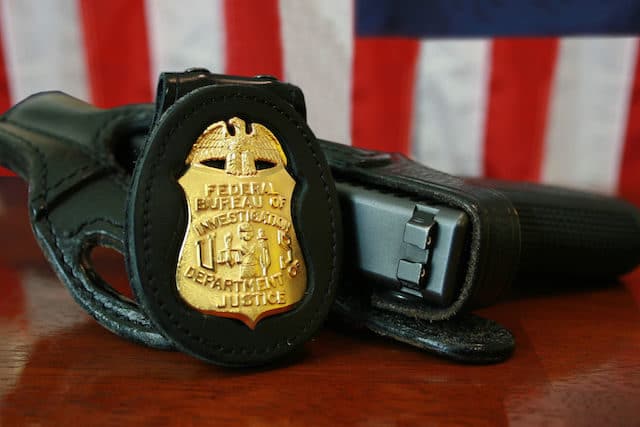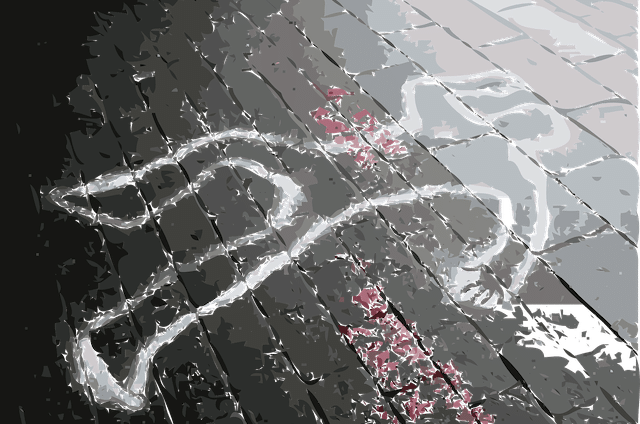When the police appear in the news these days, it's almost never for a good reason. Police annually shoots more 1000 people. There is also evidence that since 2000, police have confiscated about 70 billion dollars from ordinary citizens in the civil asset forfeiture process, whether those people are criminals or not. If that weren't enough, there's also evidence that police will occasionally fabricate or plant evidence to frame innocent people for crimes or to cover up their own mistakes.
10. The FBI has charged four people with murder

Law enforcement agencies rely on informants to obtain information. Often these are criminals themselves, who are around and around other criminals and are willing to share information with law enforcement in exchange for money or leniency when it comes to punishing their own crimes. But how valuable should an informant be?
Joseph Salvati was imprisoned for 29 years because the FBI framed him for a murder he didn't commit. They did this to protect the real culprit, a man named Jimmy "The Bear" Flemmi. Flemmi was an FBI informant for the Mafia, and they didn't want to risk losing the information he gave them, so when Edward Deegan was murdered in 1965, the FBI forced Flemmi and others to give false testimony to convict Salvati and several others of the crime. crime .
Two of the convicted men died in prison, and the third was released in 2001. The sentences were overturned after a journalist discovered FBI Secret Memos , which were never revealed during the trial. They showed that Flemmi was the real killer and informant, and that the key witness, another hitman, was lying but helping them with other cases, so they overlooked it.
The government awarded Salvati and others $101.8 million for creating the framework. FBI lawyers argued that they were working for the federal government and the trial was state-level, so they had no obligation to share information and the convictions were not their fault. The judge disagreed.
9. Sheriff Joe Arpaio charges man with attempted murder

Infamous Maricopa County Sheriff Joe Arpaio has been in the news for years for his PR moves , including forcing inmates in his prisons to wear pink, eat terrible food, work in chain gangs, and more. His office was also known the failure of serious criminal investigations, including child abuse and sexual assault. Despite his dozens of controversial actions, it's no surprise that they included accusing people of crimes.
James Saville spent four years in prison for trying to create bomb , to kill Arpaio. The jury found that Arpaio and his sheriffs had lured him into a trap, setting it all up as a publicity stunt. The man who showed Saville how to make the bomb was a police officer who not only paid for all the parts, but drove Saville to the stores to pick them up. The media was waiting as he drove Saville to where he was eventually arrested. They essentially orchestrated the entire scheme and made Saville look like the fall guy.
Saville filed a lawsuit and the district paid He's worth just over a million dollars.
8. James Dennis was sent to death row after being framed

James Dennis was sentenced to death for the murder of a high school student back in 1991. After 25 years in prison, he was finally exonerated after the courts determined that Dennis did not commit the crime, but was instead framed by police.
Sentence was filmed in 2013 and upheld on appeal in 2016. It was found that the police and prosecutors had concealedkey evidence during a trial in order to secure a conviction. This includes witnesses making confessions that implicate someone else, as well as hiding some witnesses and coercing others. Witnesses have claimed that the crime was committed three men , and Dennis did not match the description of any of them. The man did confess and give details about the crime and his accomplices, but the police never shared this information with the defense.
Dennis sued the two detectives who framed him, as well as the city. The defense offered by the police was that they had done nothing wrong, but even if they had, how were they to know that withholding some evidence was a violation of Dennis's rights?
7. Jamal Trulov was charged with murder and sentenced to 50 years

Jamal Trulove was convicted of murder in 2007 and sentenced to 50 years in prison. He was retried and then acquitted of the crime in 2015, after which he sued the city of San Francisco for a staggering $13.1 million. dollars because of how poorly the police handled the case.
Police coerced a witness into testifying that Trulove was the killer and hid other evidence that would prove his innocence. Detectives in the case showed witnesses Trulov's photos , but no one else. This only became known because when the police told a witness that it was Trulove, there was a room in the room another suspect in another crime , and was overheard. The cops would then pay the woman $63,000 to help her move. They also learned of other suspects and didn't bother to investigate them. In the end, although Trulove won a settlement, the cops simply walked away and no one was punished.
6. Police beat a confession of murder out of an Armenian

Armen Armen Poghosyan conducted in prison for five and a half years with a 15-year conviction for the rape and murder of a child. He was only released when the real killer was caught. Pogosyan initially confessed to the crime after being verbally abused by officers during interrogation. Official documents claim he was beaten, and at one point an officer hit him so hard in the ears that he the eardrum burst They forced him to sit on a glass bottle and made him listen to his brother being beaten in another room.
After his conviction was overturned, he was awarded $6.2 million in compensation to Armenia, which is about $15,000 US.
5. Police planted a rifle cartridge to frame Arthur Allan Thomas for murder

Some people are so committed to a lie that they will do anything to support it, and this was the unfortunate case of the frame-up of Arthur Allan Thomas, a man who spent 9 years in prison for a murder he did not commit. He was even convicted twice for the crime.
Thomas was convicted of double murder in 1970. That conviction was overturned after it was discovered that police had taken a shell casing from Thomas's rifle and threw her into the garden victims to link him to the crime scene. Forensic scientists were unable to exclude Tom's rifle , but they also could not confirm that his weapon had been used, so police, weeks after taking the rifle into custody, threw the shell into the garden and then found it to make an arrest.
It was the shell casing that helped free Thomas when police searched the garden in August, but the shell casing was found in October, just a week after police obtained the rifle. Although the conviction was overturned and Thomas was awarded $1 million in compensation, none of the officers involved were ever held accountable.
4. New Orleans police planted a gun on the victim's shooter.

Six days after Hurricane Katrina in 2005, police investigated what they claimed was a shootout on the Danziger Bridge in New Orleans. Two civilians were killed and four others were wounded. Police long claimed that the killings were justified because they were returning fire and defending themselves from an attack. That turned out to be untrue. In fact, police had shot their victims, who were unarmed, without provocation, and then conspired to cover it up after the fact by framing them as attackers.
The officers agreed to falsify documents and witness statements after the shooting because they knew it was improper. Later to the scene of the incident a gun was planted and tied to one of the victims to back up the lie, and a whole bunch of false witnesses were brought forward to back up the police story. This led to two officers being charged, and Later they pleaded guilty .
3. Atlanta Police Kill Grandma, Then Plant Drugs on Her

You would hope that if the police are going to search a house to catch a criminal, they would do their due diligence to make sure they are searching the right house. Too often, this is not necessarily the case, but sometimes it can get worse.
In 2006, Atlanta police raided the home of a 92-year-old woman in what was supposed to be a drug bust. They shot Katherine Johnston five times, and she died. There were no drugs, of course. However, the officers planted marijuana at the scene and then presented cocaine as evidence of drugs they had purchased at the home before the raid.
Post facto evidence showed that the documents were falsified to suggest that drugs were present at the scene. Other court documents alleged that city police had the habit of lying to obtain warrants in addition to fabricating evidence of drug transactions.
Three officers were jailed for their roles in the murder and cover-up, although they received sentences of between five and 10 years in total.
2. Police forged evidence to convict New Zealander

Alan Hall spent 19 years in prison for a murder he did not commit in New Zealand. Witnesses saw a man at the scene who looked nothing like Hall. They claimed the man was Maori, but police deleted that part because Hall was white. Other witnesses also said the man had dark skin, was much taller than Hall, was right-handed when Hall was left-handed, and was muscular when Hall was thin. He did not match any of the descriptions. Police also noted that they believed Hall might have an intellectual disability, but continued to question him without a lawyer. Years later, it was determined that Hall suffers from autism .
He was convicted in 1986, and the prosecution knew since 1988 that police had tampered with evidence, but did nothing about it. Only in 2022 The Supreme Court finally overturned the conviction and removed any hope of appealing the decision that Hall and his family finally had to end their fight.
1. Florida Police Chief Arrested Innocent People to Boost His Arrest Rate

People often accuse the police of writing traffic tickets, and that's not entirely true. Cops also like to clear a certain percentage of arrests to make them look efficient, and in Biscayne Park, Florida, the police were willing to frame innocent people to make their stats perfect.
A sixteen-year-old boy was accused of multiple thefts by the police chief and his officers, who arrested and charged the boy with four crimes , despite the lack of evidence of his involvement.
Later the boss said that it was too much for him they put a lot of pressure on me , and he wanted to impress other officers by having a spotless arrest record. So they just started arresting anyone they wanted and charging them with crimes. That meant charging black people with crimes in white neighborhoods. The 16-year-old was just one of several. He even bragged publicly about how well his department was doing.
After he was caught, the leader was sentenced to three years in prison. The charges against the boy were dropped.














Оставить Комментарий